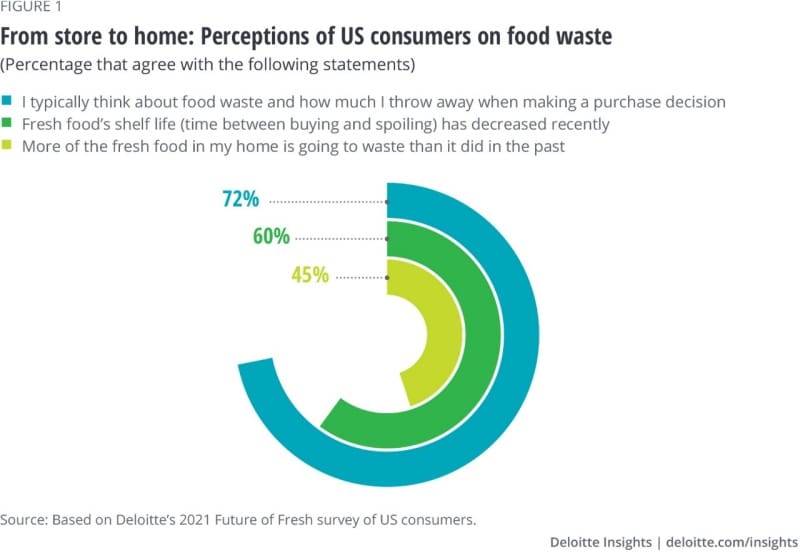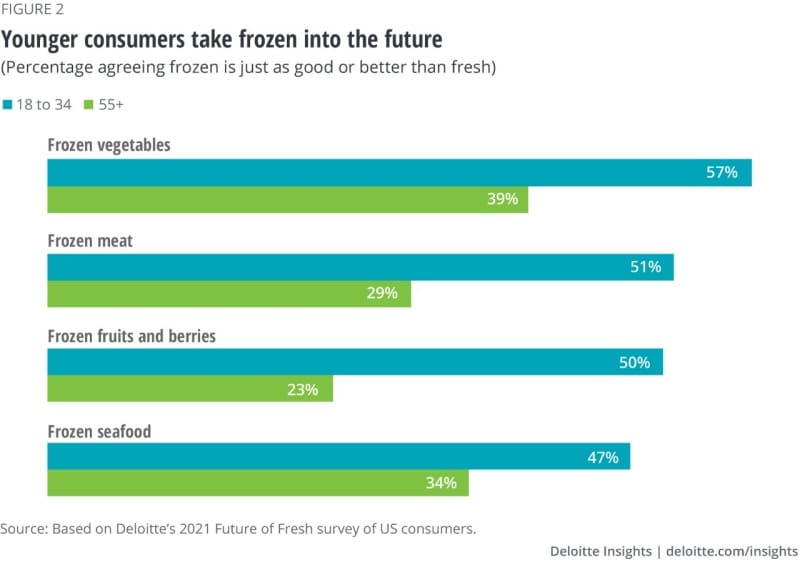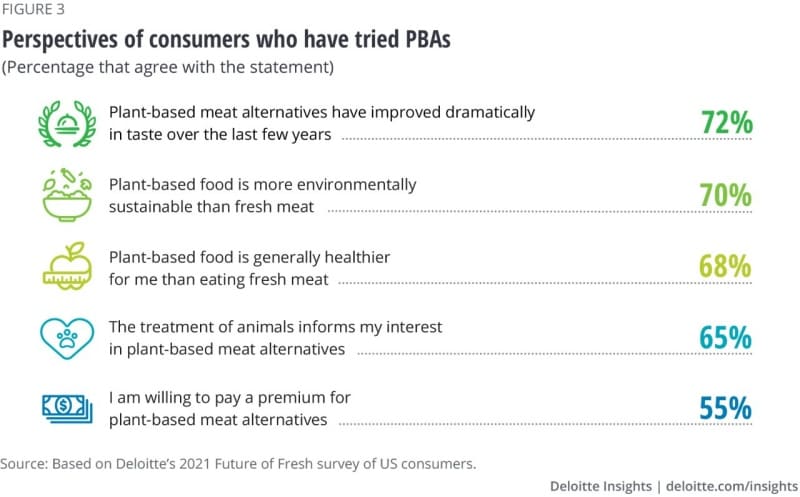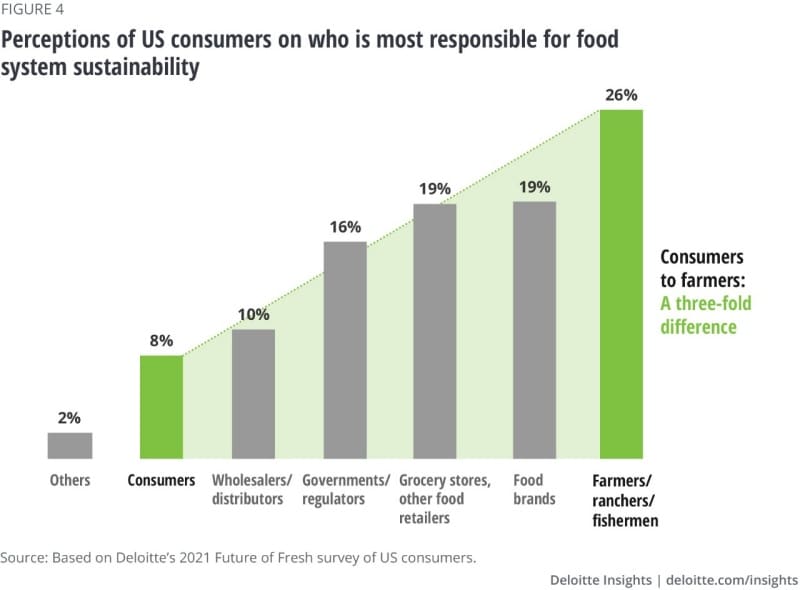Who likes fresh? Revisiting contemporary and conventional consumers
By this point one could assume the world had tilted entirely away from fresh. While the forces supercharging frozen are real, that change is only at the margins and it is important to stay grounded with all that fresh brings to the table. It still occupies a much larger market share than frozen, and it generally is what gets consumers excited and in through the door. As they have year after year, 90% of consumers say eating fresh food makes them happy whereas (a new question this year) only 40% say the same about frozen. Eating fresh is an identity and lifestyle that don’t appear to translate to or have the same cachet in frozen.
Revisiting our fresh consumer profiles from the 2020 study helps reveal the ongoing importance and future of fresh. A renewed statistical analysis was conducted based on consumer responses relative to shopping frequency, amount of fresh food purchased, perception on price, channel usage, stress while shopping, and experience with stock-outs. This exercise confirmed the continued presence of two distinct fresh consumer profiles, namely contemporary and conventional.
Contemporary consumers
- Forty-eight percent of the survey group (up from 40% in 2020)
- Still tend to be younger families, more well-off, and urban dwellers
Conventional consumers
- Fifty-two percent of the survey group (down from 60% in 2020)
- Still tend to be older, lower-income, and more rural
Contemporary consumers—the group that grew—value fresh food the most and their love for it seems even stronger now. Sixty percent say they recently increased their purchases of fresh food, which is up 10 percentage points from the last study. Almost eight in 10 are now willing to pay a premium for fresh food. Seven in 10 value the fresh brand, up from only six in 10 a year prior. In this unique category, brand of course extends beyond logos to the channel and experience of fresh.
Still by far the most omnichannel of shoppers, contemporary consumers this year got a somewhat higher share of their fresh food from grocery stores (up 9 percentage points over last year). This could be an indication that fresh departments are making progress with enticing this fresh-loving consumer group back to stores.
As companies grapple with their technology and innovation investment decisions, they should know that contemporary consumers are still the biggest users of online shopping for fresh food. Two-thirds (68%) bought at least some fresh food online versus only 10% of conventional consumers—both figures essentially unchanged from last year. They are also even more likely now to be interested in other innovations like subscription services (64%, up from 59% in 2020) and low- and no-prep fresh meal solutions (78%, up from 71% in 2020).
Safety was a new purchase driver in the 2020 study, tied in importance to price. Contemporary consumer concern for safety hasn’t changed since. It remained the top driver in 2021, with nine in 10 consumers saying that protecting their own personal health and safety as well as that of others while shopping was still important to them. A similar nine in 10 again said they want fresh food with packaging that prevents contamination.
In the 2020 edition, contemporary consumers were shown to be open to trying alternatives to fresh when confronting stock-outs, including switching to frozen food. And when they tried it as an out-of-stock substitute, they often liked it. Contemporary consumers may value fresh more than their conventional peers, but they also are more open to frozen. In new questions this year, contemporary consumers said frozen was just as good as or better than fresh, with scores that were at a minimum of 18 percentage points higher than those of conventional consumers. This spans frozen vegetables, meat, seafood, and fruit and berries. Half of contemporary consumers even said frozen food was good for weight loss, compared with only 17% of conventional. In short, the fresh-loving contemporary consumer is subject to being converted to a frozen buyer too.














